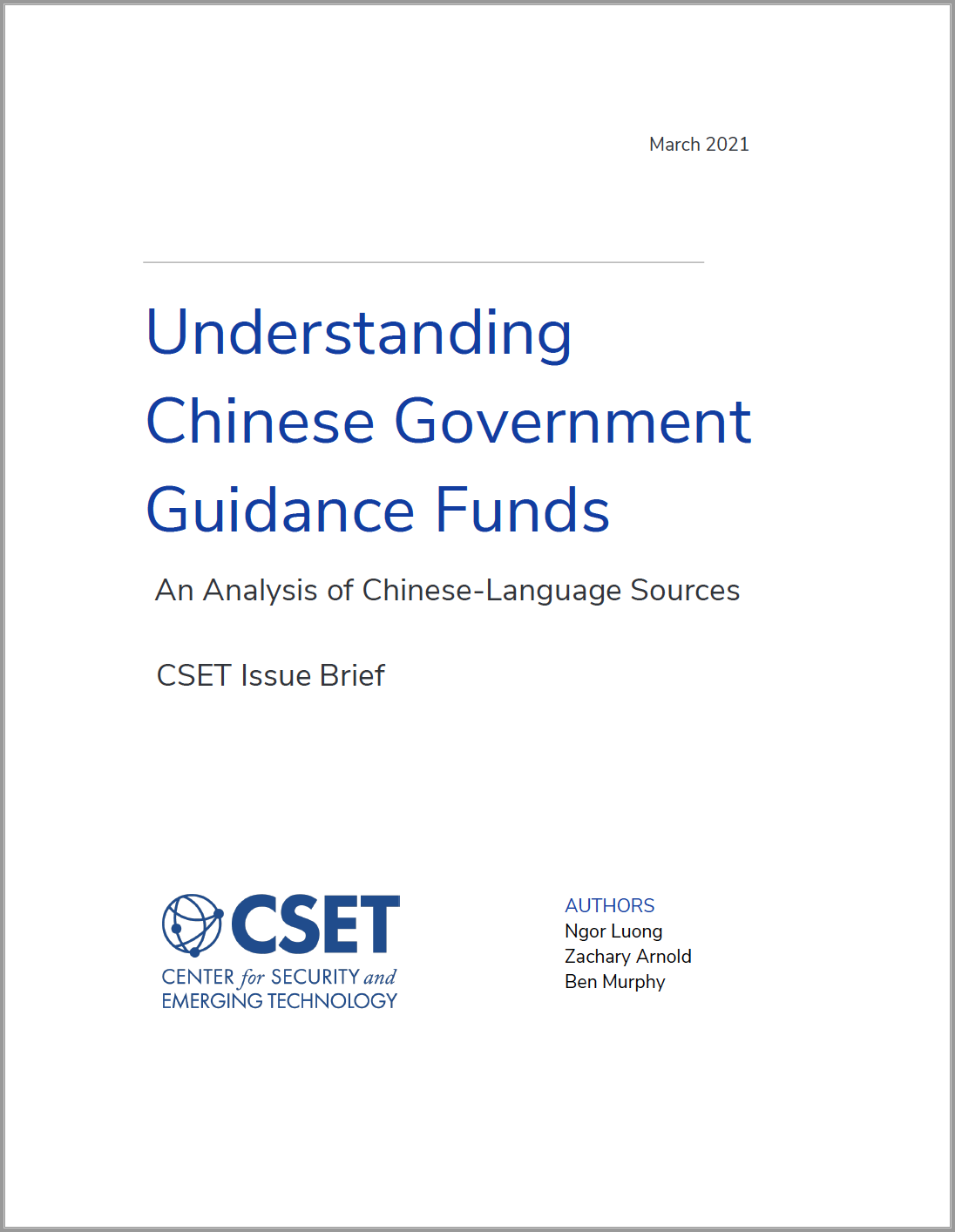Executive Summary
China’s government is deploying massive amounts of capital in an effort to “catch up with and surpass” the United States in advanced technology. As part of this effort, the Chinese government has invested financially and politically in government guidance funds [政府引导基金], public-private investment funds that aim to both produce financial returns and further the government’s industrial policy goals. As of the first quarter of 2020, Chinese officials had set up 1,741 guidance funds, with a registered target size of 11 trillion RMB (1.55 trillion USD). However, these funds had only raised a total of 4.76 trillion RMB (672 billion USD) from private and public sources.
While guidance funds’ ambitions are clear, their long-term prospects for success are not. Drawing exclusively on Chinese language sources, this issue brief examines how guidance funds raise and deploy capital, manage their investments, and interact with other public and private actors. We find that many guidance funds are poorly conceived and implemented, and that the mechanism as a whole is often inefficient. Nonetheless, these funds have many advantages over traditional industrial policy mechanisms, and they are unquestionably helping mobilize money and other resources for new businesses and emerging technologies. The guidance fund model is no silver bullet, but it should not be casually dismissed.
As an industrial policy tool, guidance funds have several potential advantages:
- Guidance funds allow the Chinese state to leverage market discipline and expertise.
- Guidance funds offer patient capital, a critical resource for emerging technologies.
- Guidance funds can complement and amplify other industrial policy measures, producing robust, holistic support for emerging and high-tech businesses.
In practice, however, most guidance funds fail to live up to their ambitions, weakened by unrealistic goals, bureaucratic constraints, incompetent management, risk aversion, and a lack of market discipline. Our research shows that:
- Guidance funds often raise much less money than planned.
- Much of the money guidance funds raise is never actually invested in projects.
- There are too many guidance funds, leading to redundancy and inefficiency.
- Many guidance funds are poorly managed.
- Guidance fund capital has been wasted on nonstrategic and illicit activities.
- Guidance funds do not invest in early-stage companies as intended.
- Guidance funds often fail to attract truly private capital, and in some cases may even crowd private capital out of the market.
Even with these flaws, however, guidance funds still have advantages over China’s traditional industrial policy mechanisms. And today, a subset of disciplined, market-oriented guidance funds is successfully raising money and investing in projects. These funds are especially likely to find success when their government sponsors are willing to tolerate some risk and allow professional fund managers to make market-oriented decisions.
As the guidance fund model undergoes reforms, more funds may succeed in bringing public and private capital together to advance China’s strategic industries. To better track how the model may evolve, we provide a set of performance indicators to apply over the coming years.
